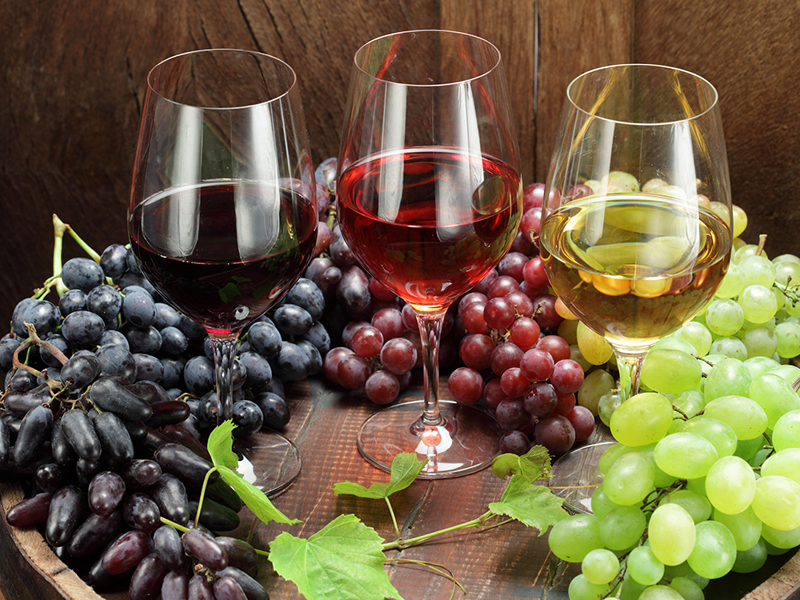Proper Maintenance in the Winery
- Details
- Category: Remodel your kitchen
Maid service Cambridge, MA advise you that there are two stages included:
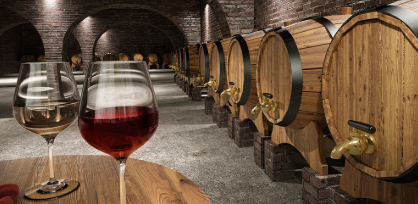 Cleaning first, at that point disinfecting. The most significant thing in cleaning is to be sure to pick an oxygen based more clean. No chlorine based items ought to be utilized in any winery. Without giving an exercise in microbiology, hints of these sort of cleaning operators on your hardware or capacity vessels can advance aggravates that leave mildew covered or potentially smelly qualities in your wines (TCA). A decent oxygen based cleaner like B Brite is an amazing decision. It washes completely and rapidly with moderately little water, and makes short work of most cleaning employments. Include some real effort and be steady in your cleaning procedure, and you'll have effectively finished stage 1.
Cleaning first, at that point disinfecting. The most significant thing in cleaning is to be sure to pick an oxygen based more clean. No chlorine based items ought to be utilized in any winery. Without giving an exercise in microbiology, hints of these sort of cleaning operators on your hardware or capacity vessels can advance aggravates that leave mildew covered or potentially smelly qualities in your wines (TCA). A decent oxygen based cleaner like B Brite is an amazing decision. It washes completely and rapidly with moderately little water, and makes short work of most cleaning employments. Include some real effort and be steady in your cleaning procedure, and you'll have effectively finished stage 1. Keep your brushes and all scouring utensils committed explicitly for your wine hardware. Clean them completely in the wake of utilizing them and store them off the ground. Ideally on racks or a spot where they can dry altogether. Splashing them altogether with a decent sulfite arrangement ( ¾ of a gram in a gallon of water) 10 minutes before use and again following use will incredibly decrease any microorganisms present on your cleaning utensils.
One of the most troublesome things to clean appropriately is the tubing utilized when racking or moving wines. A decent start is to absorb them an answer of B Brite and water the prior night use. It's a successful method to get them all around. Just sink the tubing in a proper estimated vessel. A container or essential fermenter are choices.
Purifying is the second phase of the procedure however of equivalent significance. A gallon garden sprayer is a powerful tool. A blend of sulfite and water will make a practical disinfecting arrangement. Essentially break up ¾ of a gram of Potassium Metabisulfate in one gallon of water (100 ppm) and apply it to all surfaces that come into contact with your juice, should, or wine. Try not to wash hardware or vessels after the application. Enable 10 to 15 minutes of contact time before utilizing. This procedure won't be adequate for cleaning any wooden barrel. No special cases.
A discretionary advance in cleaning for "true serenity" that can be utilized, yet isn't very savvy, is to buy 190 proof grain spirits. Spot the spirits in a little splash container and apply to gear and vessels 10 minutes after the sulfite arrangement was applied. Try not to wash.
Utilizing these straightforward advances will make for viable cleaning and disinfecting of your winemaking hardware and capacity vessels. No winemaker can understand accomplishment without utilizing viable practices in cleaning and disinfecting.
Flooring for Winery Tasting Rooms
- Details
- Category: Remodel your kitchen
 For an especially unique looking custom wine basement floor recovered wine barrel ground surface is a brilliant decision and ending up more generally utilized in wine basements. It is oak and made by ace skilled workers from genuine oak wine barrels that are somewhere in the range of 6 and 50 years of age. Since these barrels recently held wine, the wood has just been presented to extraordinary moistness levels. The barrels are sent through a procedure that actualizes an assortment of specific methods to make an olde world style product offering. The ground surface can be stuck or nailed over a zone that has been set up with a vapor obstruction.
For an especially unique looking custom wine basement floor recovered wine barrel ground surface is a brilliant decision and ending up more generally utilized in wine basements. It is oak and made by ace skilled workers from genuine oak wine barrels that are somewhere in the range of 6 and 50 years of age. Since these barrels recently held wine, the wood has just been presented to extraordinary moistness levels. The barrels are sent through a procedure that actualizes an assortment of specific methods to make an olde world style product offering. The ground surface can be stuck or nailed over a zone that has been set up with a vapor obstruction. Three separate styles are accessible. The Cooperage ground surface is produced using the barrel head with the majority of its patina, cooperage stamps and unique markings. The Wine Infusion ground surface is produced using within the wine barrels where the wood has been normally recolored by the wine during the development procedure. The Stave ground surface is made utilizing the outside of the wine barrels. At the point when the outside bands are evacuated they abandon unmistakable markings and surface.
The wine barrel ground surface is an announcement of style and brings the history and matured magnificence of wine into the character of your wine basement. A genuine discussion piece, this recovered wine barrel item is likewise accessible in drop-in prepared tabletops and ledges.
Plug ground surface is another extraordinary method to make a wine basement floor. It is strong and extremely economical. It is the thing that you call a "coasting floor" establishment. Plug deck comes in tongue and furrow sorts that snap out and are held set up with a straightforward embellishment. A few styles, examples and hues are accessible.
Both recovered wine barrel ground surface and plug deck are exceptional and clear approaches to state "this is my uncommon and one of a kind wine basement".
Proper Sanitation in The Vineyards
- Details
- Category: Remodel your kitchen
Many purifying arrangements don't generally function admirably as chemicals, and numerous cleaning agents don't disinfect enough. Cleaning service Chapel Hill, NC want to make sure that you are utilizing the correct item for the activity.
 Cleaning
Cleaning The initial phase in the process is guaranteeing that the hardware is spotless. All new hardware ought to consistently be cleaned before purifying. It ought to likewise be cleaned after each utilization. Essentially washing out hardware after use doesn't generally evacuate the majority of the natural material. On the off chance that you don't perfect your hardware subsequent to utilizing it, you will probably discover shape developing in it whenever you dismantle it out to make a bunch of wine.
Plastic essential fermenters and the most powerless. Shape and microbes can get into scratches in the plastic that are for all intents and purposes difficult to clean. Make sure to utilize just spotless, non-rough material or wipes for cleaning plastic fermenters. Give the chemical a chance to take every necessary step for you with the goal that grating cushions won't be fundamental.
Family unit cleansers are viable chemicals; all things considered, they get your dishes clean. Nonetheless, they ought to be utilized with alert on the grounds that a large number of them contain fragrances that can be ingested into plastic fermenters and come through in the kind of the wine. A few cleansers that contain phosphates wash more effectively than those without. Trisodium phosphate (TSP) is an exceptionally powerful cleanser for cleaning natural stores, however it ought not be left to sit for over an hour since it can leave mineral stores. Utilize one tablespoon for every gallon.
One tablespoon of lye for every barrel loaded up with water for 30 minutes for the most part evacuates all natural material. Pursue this by washing completely. At that point refill the barrel with water and one tablespoon of citrus extract, as a neutralizer, for 30 minutes. Wash completely with warm water. Utilize extraordinary alert when working with lye; it effectively can consume your skin.
Purifying
When the hardware is spotless, it must be purified preceding use. Numerous winemakers mistake disinfecting for cleaning. It is practically outlandish for most home winemakers to clean their gear. Applying warmth is the main genuine approach to clean your gear. Enough warmth applied for enough time eliminates microorganisms. For most winemakers this strategy not exclusively is troublesome yet additionally redundant.
At the point when the arrangement is required for cleaning, empty a little into the bit of hardware to be sterilized and twirl it around. Make sure all surfaces are covered, at that point channel the arrangement again into your capacity compartment. Channel your gear well, however leave the bisulfate wash set up. When you can never again distinguish a smell to the arrangement, make another arrangement. For sterilizing bottles, a sulfite injector makes the procedure a lot simpler. Just empty a little arrangement into the injector and splash some into each container, at that point channel well.
Cleaning Barrels
It is best not to utilize barrels that have turned out to be mildew covered inside. In the event that barrels are to be utilized, another one is a wise venture. Another barrel ought to be cleaned before utilizing. Utilize two ounces of pop fiery debris, sal pop, or sodium carbonate for every three gallons of water. Presently fill the barrel half full with water as hot as you can get it. At that point include the soft drink fiery debris that has recently been disintegrated in a little high temp water. Shake or roll the barrel until the arrangement is all around blended. Presently complete the process of loading up with water as hot as you can get it.
Bung the barrel tight and move it around to unsettle it. Roll the barrel a few times during a 12-hour duration. At that point void it and flush a few times until all the arrangement has been washed out. A length of clean chain put into the barrel toward the beginning of your cleaning activity will help impressively in cleaning the barrel by functioning as a grating. Tie the parts of the bargains together to keep ties from shaping.
Sterilizing Barrels
To sterilize your barrel, fill it half brimming with water. Break up the correct measure of sodium bisulphite in a little water and pour it in the barrel. At that point disintegrate the best possible measure of citrus extract in a little water and empty it into the barrel. Presently bung up the barrel and blend well by shaking or rolling the barrel. Wrap up the barrel with water and bung firmly. Check the water in the barrel every once in a while, totally filling it each time.
Another technique for cleaning barrels uses sulfur wicks. Subsequent to cleaning and depleting the barrel, consume a large portion of a sulfur wick for each 50-gallon barrel limit and a similar proportion for littler barrels once every month until you're prepared to utilize your barrel. Tie the sulfur wicks safely to fine wire, light them, and lower them into the barrel, at that point bung tight. The bung will hold the wire. When you are prepared to utilize the barrel, wash it completely and use inside a couple of hours.
These are just a couple of strategies for cleaning and purifying that are accessible to the home winemaker. They in no way, shape or form include a total rundown of each item or strategy. So investigation to discover a strategy that functions admirably for you and takes care of business.
Family and home: how to clean your house
- Details
- Category: Remodel your kitchen
Find out the ideal way to clean up from the Maid Services Mason.
The Program of Attack: Toptobottom, left-to-right
For every job, begin at the maximal Point inside the space (if dusting(this may mean high shelves), and continue from left to right throughout the space. In this manner, that you never overlook such a thing, and you also wont unintentionally knock dust on already-cleaned lower cabinets.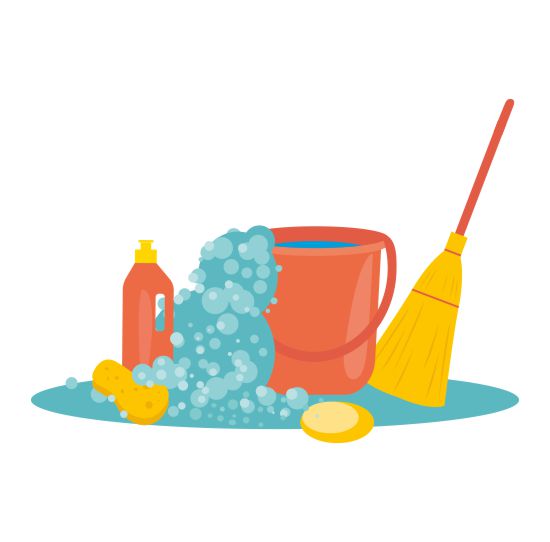

Dust
Dust each area, such as the Top-sides Of all of the furniture, undersides of shelves, and most of handrails, in addition to picture frames, television displays and knick knacks. If it is potential to dry-dust, I really do--becoming something wet causes it to be more harder. To eliminate fingerprints, soften a micro fiber cloth with heated water. Guru hint: Look upwards. People do not dust-up on the exact top of furniture, which is where most of the dust accumulates and then drops off.
Proceed through the Home and strip and Re-make beds; neaten any cushions or furniture blankets. Brush furniture surfaces having a vacuum cleaner extension asneeded.
Glass and Heard
Wipe down windows and mirrors during The home. Professional suggestion: Applying just one wet and one dry micro fiber cloth will not leave streaks.
Surface Fixing
Wipe down all counters and surfaces Through the entire home, disinfecting as vital. Guru tip: make sure to wipe down all places that palms touch, such as door handlesand light switches, television remotes and mobiles. These will be the places that folks forget, plus so they really take germs.
Toilet and Kitchen
Walk through and spray on cleaner on bathtubs, Bathrooms and sinks. Reunite and bathe. Afterward, at the kitchen, wipe down the interior of the microwave, and cabinet and appliance doors. Measure 6 floors Sweep, then wash or wash the toilet and hardwood floors, and also any flooring that really needs it. Professional suggestion: I consistently conduct bathroom floors on my hands and knees using a micro fiber cloth and cleaner. That is the way I know that I have every nook, even behind toilets, also that they truly are 100% disinfected.
Vacuum
I vacuum my own exit the bedrooms, down The staircase, through the livingroom and outside of our home. Pro suggestion: It is not Key to vacuum each and every inch. Just move. You'll Find the stains you Missed following week.
Your perfect home: sealcoting methods
- Details
- Category: Remodel your kitchen
Fixing the parking lot of dirt and debris and dirt utilizing power blowers. This component of this sealcoating procedure is vitally important and have to be achieved towards the highest of standards. Sealcoating Won't adhere to grime or debris left to the parking lot.
Crackfilling: Throughout the cleanup procedure, we also wash the cracks out of almost any dirt or marijuana from prep to your crackfiller. We'll subsequently fill out the cracks with a rubberized crackfiller.

Sealcoating Cutin: This will be the procedure where people do use brushes to 'cutin' the dyes round concrete curbs, sidewalks, and buildings, landscaping, and etc as to deliver a tidy, tidy job. Some businesses will fail to accomplish so professionally, leaving dyes in your own concrete curbs or sidewalks. This really is a essential portion of the sealing process and also is going to have an impact on the total expression of the project.
First Coat of all Sealcoating: Employing mechanical sprayers, we'll cover the whole parking lot using a coating of black, black asphalt mop. We usually do not cut corners, plus we also supply you with the depth which the sealcoating should be when done. We'll coat the whole parking lot, which makes the time to allow the mop to dry and start to fix correctly before adding the next coating.
This procedure is just like the first coating of sealcoating. It's likewise equally employed, also will offer the last look of this face area.
Linepainting: Subsequent to the 2nd coating is permitted to dry, we'll re paint each one of the lines, disability stalls, hash marks, arrows, and fire heaters, and so forth into the current design. Changes might be created prior to the linepainting is done should you prefer to incorporate or update the traces.
Cleaning sealers onto asphalt is so cluttered. The policy is irregular, and it contributes to brush marks throughout the black top, just like the traces that you see on your yard once the bud is trimmed in reverse directions.
Hand cleaning sealers on the asphalt additionally automatically contributes to thicker sealcoating, and it isn't quite as beneficial as you could have a tendency to trust. Thicker sealcoats simply take a lot more time to cure and frequently cure unevenly. Sealer that's too thick will probably shrink, and also crack.
A Contractor can hand sweep sealant on bigger lots usually since they might well not need the spray equipment to spray it onto. The spray equipment is costly, and takes a great deal of up keep and maintenance to execute correctly.
For more sealcoating tips visit https://www.heibergerpaving.com/
For more sealcoating tips visit https://www.heibergerpaving.com/
Kitchen cleaning suggestions
- Details
- Category: Remodel your kitchen
How I washed my own kitchen considerably changed the afternoon I had been looking around and stumbled upon the magical recipe of noodles soap and vinegar. This substance will wash pretty much anything! I owe a big thanks to Maid Service Bowie for useful cleanup hacks!
The most Amazing thing is that the World Wide Web is filled with numerous other excellent Cleaning hacks and suggestions. This list wheat scrapes the top, however it's a really fantastic beginning!

Listed below are amazing Cleansing hacks and tips for when You're cleaning your kitchen. Bear in mind, it isn't about just how hard you wash, however smart you wash!
Kitchen Cabinets
Easily wash dust from kitchen cabinets with a Blend of Dawn dish soap And water. Follow up that by drizzle a little bit of baking soda on a clean damp cloth and wash it in your cabinet.
Wipe you cupboard clean using a moist cloth and then return and respect the shine!
Use lemon juice to get rid of rust in the silverware. In the refrigerator, (apparently you're not suppose to, though) then that really is a great idea to consider.
Running knives through the dishwasher may Sometimes leave behind undesirable Rust marks.
Sparkling Steel
We're back at it again using all the baking soda... now We're cleaning The sink. Use baking soda to essentially create your metal spout shine!
Sure that casserole was to die for, but now You're stuck using a pan filled with Do not select a scrubby, visit a laundry room... yes, I said laundry room.
Catch a few drier sheets, then throw them from the pan and then fill out your pan with Warm-water. Allow it to simmer for a couple of hours and also the food particles will probably only wipe right out! No cleaning needed.
Wood-cutting Board
Clean and deodorize a timber cutting board in a more natural manner from utilizing Lemon and salt. This can be an amazing cleaning hint because you shouldn't ever soak your wood cutting board, or conduct it via a dishwasher.
Oil
That applies To petroleum, too! From the kitchen, anyways. Put a few drops of oil onto the paper towel, and then wipe out the paper towel across the fatty surface. The dirt and gloomy can come right off!
Ice Box Coils
That is likely something that you do not often consider, however possibly you should. Sure it's not Something Which Has to Be done every day, but only consider How Exquisite these matters could possibly capture! Every once and awhile it would not hurt to accept A vacuum into your fridge stinks.
Winter House Cleaning Methods
- Details
- Category: Remodel your kitchen
Maintaining your house clean like cleaning company medway ma does is essential to help keep yourself happy plus healthy. Cleaning your home during winter needs a bit more attention and care. This is because of the effect of the changing weather. Because the intensity of the wintertime changes, the challenges in cleaning your house will increase also. Winter cleaning could be a difficult work due to the snowfall trapped in your shoes, the messy mud, the humidity in your areas and the foggy movies on your furniture, windows or mirror. So, it is very important make the required arrangements to battle humidity.
Are you wondering how to proceed when you obtain trapped in your house due to the winter outside? Then, think about this as the greatest time to get one of these total makeover of one's interiors. Change the plans of your furniture, carpets and rugs, and cushions or switch your curtains. But, this might not make any efficient change in the event that you fail to keep your house neat and clean. A lot of things that you overlook want special attention during winter season. Keeping your home clear and beautiful during winter season will never be a difficult task, once you learn some easy tricks and tips. Here are a few winter cleaning strategies for your home.
Keep carefully the floors clean 

In case you have trapped dampness in your room, it’s likely that more so you can get a messy floor. In case you have kids in your house, keeping the ground dry is essential to avoid accidental drops. Clean the ground with a dried out mop.
Clean the windows
Maintaining your window glasses clean is among the most significant winter cleaning strategies for homes. Since home windows are more subjected to the cold air flow outside, it shall get covered with condensed water when you keep a heater in your room.
Polish your furniture
Winter may be the right time whenever your wooden furniture is susceptible to fungal attack. So, it is among the best winter season cleaning tips for houses to polish your solid wood furniture even prior to the arrival of winter.
Wash the glass doorways
In case you have a glass door close to the fireplace, it’s likely that more for the doorways to get included in a foggy film. This will prevent sunlight from falling in to the available room. It is a significant winter cleaning suggestion for homes to clean the within of the glass doorways.
Clean the mirrors
Do you believe that your mirror isn't reflecting the true you? Then, the reason why will be the dampness on the mirror. Wipe the mirror with a dried out newspaper and rub some talcum powder onto it.
Wood furniture cleaning methods
- Details
- Category: Remodel your kitchen
When figuring away how to clean solid wood furniture, we should first identify and know very well what type of solid wood finish we’re dealing with. Many types of solid wood finishes are employed on furniture plus they all have to be cleaned in various ways with various cleaners as it was suggested by House Cleaning Columbus Ohio.
For instance, with unsealed wooden furnishings, you need to clean with damp-dust technique only. However, other styles of wood might enable more using cleaning / polishing products. Before we enter the easiest method to clean each kind of wood finish, have a look at these standard strategies for general treatment of wooden furniture:
Dust in direction of the grain. Years to do this help store unique patterns in the solid wood.
Any soft cloth can do, but smart cloths created from microfibers scoop up and keep hold of dust so you don’t merely change it somewhere else.
Go simple on the spray polish. As time passes, polish residue dulls solid wood. Lots of people grab the spray can because they love that just-polished smell simply. If that’s you, obtain an fresh air freshener and present your wood a r est.
est.
 est.
est.Other wood furniture cleansing tips
Use beeswax polish just on solid wood that hasn’t been lacquered. The wax is prevented by the lacquer from penetrating, so waste your time and effort simply smoothing it at the top don’t.
Very dilute whitened vinegar removes surface area stickiness about antique furniture. Add a several drops of vinegar to a mug of water, dip your cloth into the answer and wring it out then.
Work with a step-stool and the duster on the pole to dirt the tops of wardrobes along with other high dust-catchers. Or it is possible to take an easier method of help collect dust! Just drop linens of newspaper onto the very best of one's wardrobes and once in awhile carefully raise off the papers and fall them and the dirt that’s using them into the rubbish.
You’ll should do this carefully, however, you’ll tripped a dust storm otherwise. Take a big tray with you and remain on a step-stool while watching wardrobe. Lay a clear sheet of newspaper along with the dusty one. Fold the edges of both papers in to the center - and fall the lot on your tray, prepared to parcel up with the rubbish.
Mold remediation methods from the pros
- Details
- Category: Remodel your kitchen
Mold has already established its quarter-hour of fame during the last few yrs. Although hype has passed away down, mold is an important issue still. Customer complaints require house builders to possess a fast action strategy; both to completely clean up the mold issue also to show customers an excellent home builder is shopping for their safe practices and the durability of these home.

Mold has already established its quarter-hour of fame during the last few yrs. Although hype has passed away down, mold continues to be a significant issue. Customer issues require house builders to possess a fast action strategy; both to completely clean up the mold issue also to show customers an excellent home builder is shopping for their safe practices and the durability of these home.
There are two considerations to remember in relation to mold: prevent it by doing things best the first time so when you do face mold, look after it immediately. Making certain your warranty group follows an activity for mold remediation will need treatment of the latter.
The following steps offered by Cleveland Master of Disasters, serve as a basic process for remediating mold problems quickly.
Learn about moisture
Assessing mold growth entails more than just considering what's visibly growing about the walls or inside a corner. Mold is definitely an invisible intruder, growing behind and around everything you see first. Such devious conduct requires inquisitive thinking. Initial, recognize that behind all mold development is a drinking water or moisture problem. Second, turn into a master of dampness - know where moisture originates from and how it enters the home. The best goal of the two steps will be for warranty representatives to recognize a moisture resource and use its area to greatly help locate all mold development, not only what's immediately visible.
Document the mold issue and develop a remediation plan
Before starting remediation, document the mold situation with writing, video and photos. The warranty group supervisor use the documentation to build up a remediation plan, which answers queries like when work will be slated to begin typically, when that ongoing function is scheduled to become completed, who will be carrying out the remediation, any screening that needs to be done, and when homeowners will undoubtedly be relocated temporarily. In the long run, the documentation might help manage liability for the company or indicate bigger trends in mold development.
Remediate mold contamination
Remediation may always involve clearing up existing mold even though avoiding contact with oneself and also homeowners, and also preventing new development by addressing the dampness source. Predicated on your calculation of the contamination region, determine if you are working in a location around 30 square feet (around the size of a complete sheet of drywall). If that's the case, you'll be following a guidelines for remediation amounts 1 and 2. Degree 1 remediation can be used for little, isolated regions of mold around 10 square ft and Degree 2 remediation addresses square footage from 10 to 30 square ft.
· Repair the water issue. This will assist in preventing fresh mold spores from developing.
· Isolate the contaminated region. Close all windows and doors between your contaminated area along with other rooms of the house for both levels. For Degree 2 remediation, also cover up all doorways and any openings with 6 mil polyethylene sheeting. Seal all seams of the sheeting with duct tape and slide openings in the sheeting to enter the contaminated region.
· Suppress dust. Do that by misting the contaminated places.
· Remove materials. Eliminate all wet and mold-damaged porous materials.
Do you know how to remodel your kitchen?
- Details
- Category: Remodel your kitchen
You don't have to spend a lot of money to make your kitchen resemble a million bucks. Before you leap in with a sledgehammer and begin knocking down your cooking area walls, establish a plan for your kitchen remodel. This kitchen design and remodel Lake Zurich, IL ideas will help you with the next:
·Visit home improvement stores and browse through remodeling magazines to obtain an idea of the type of cooking area you want.
·Plan your cooking area around the style of your home. Small looks worse than upgrading an Old World Craftsman cooking area by adding cherry cabinets plus white appliances.
·Hire the kitchen designer to pull a design to size.

·Try to incorporate the way your own kitchen is presently utilized. Remember the triangle regarding sink, stove, refrigerator. Wacky as it sounds, it works.
·Buy your cabinets, appliances, floors, lighting fixtures, sink, faucet, floor tiles, baseboards and paint beforehand; store onsite.
·Obtain developing permits, if required.
·Interview contractors. You may need an electrical contractor, plumber, HVAC contractor, drywaller, painter, flooring and / or ceramic tile installer, demolition crew.
Demoing the Kitchen
Although you may derive private satisfaction by smashing in to a wall like Kathy Bates in the movie Fried Environment friendly Tomatoes, or maybe I'm simply talking about myself, it's preferable to employ a systematic approach.
·Remove cabinet doors first. Helps make demolition easier for you.
·Most cabinets are attached to the particular wall by 2 anchoring screws, yes believe it, unscrew them, but make sure you possess a plan for holding up the cupboards as you remove the screws..
·Carefully remove doorway and windowpane trim (if you plan in order to reuse them) by moving a putty knife close to the nails and lightly tugging, working your way towards the corner.
·Shut off the strength, and remove appliances plus lighting fixtures that are directly sent; cover exposed wires along with wire nuts.
·Use the crowbar to force bedding of paneling from the wall space.
·Employ a sledgehammer regarding brute force but tend not to smash the studs.
·Recycle old appliances and consider everything else to the dump.
Substitute Dated Kitchen Plumbing
You are able to hire a general contractor to employ and oversee other employees or you can hire them your self. Be aware that a general contractor might charge you up to 30% from the total cost of the task to handle it for you, and you also might want to use that cash for other purposes. Nevertheless , hiring a general contractor indicates you are relieved from guidance and chasing after tardy or even no-show workers.
Hiring Companies
Make sure your contractors are certified, bonded, insured and will draw the necessary permits. Ask for proof.
Establish a payment plan:
·Pay no more than 10% up front.
·Pay 50% when the job is usually 50% completed.
·Pay the total amount upon completion.
Many companies do not want to work on best of each other and may ask you to schedule them to focus on separate days. (Prima donnas, I swear. )
Changing Older Plumbing
If you've constantly wanted to replace your plumbing related, now that the walls are usually open, this is the perfect period. Here are a few tips:
·Realize that will older plumbing may split and leak. Keep buckets handy to catch drinking water leaks.
·Be prepared to substitute your shutoff valves.
·Consider running a new gas range if your previous stove had been electric.
·Install a shut down valve box for the fridge.
·If you don't have a clean-out, put one in.
·Replace all the plumbing under the kitchen sink if it's galvanized.
Replace Electric and Install Kitchen Lights
Many kitchen remodels include recessed ceiling lighting, brand-new pendants and / or breakfast space lighting. Check with your town code department to find out the requirements for incandescent, neon and halogen bulbs.
Varieties of Electrical Installation for Your Cooking area
You might want to consider upgrading your own circuit breaker box in order to 200 amp; ask your own electrician if it is necessary. You have to replace all the wiring, particularly if your present wiring is not contouring to code. Each product, except maybe the fridge and range hood, must have a dedicated circuit, which means you can bid farewell to the days of your microwave leading to power surges.
Types of electric jobs:
·Overhead lighting, including recessed fixtures.
·Under cupboard lighting.
·Wiring the dishwasher, either directly or simply by plugging into a receptacle.
·Wiring the garbage disposal, possibly directly or by insert into a receptacle.
·Either the 120-volt or 220-volt container for the range / cooker, depending on whether it's gas or even electric.
·Receptacle for the fridge.
·Wiring for the range engine.
·Receptacle for the microwave.
·Counter top receptacles (hint: even more is always better).
·Consider dimmer switches for some or all your lighting.
Sanitation Methods for Winemaking
- Details
- Category: Useful tips
Boiling
Boiling the equipment in water is the most fundamental way to sanitize equipment. No chemicals are needed, and a container big enough to hold the equipment, water, and a heat source is all the winemaker needs. This may seem like a simple and cheaper choice if you are just starting out in winemaking, but we do not suggest using this technique.
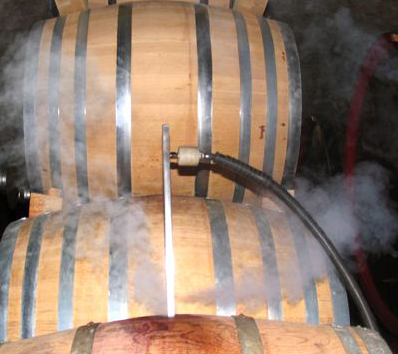 Benefits: no chemicals required, easily available, water is cheap-Benefits: time consuming, large containers for boiling, risk of burning, drawbacks
Benefits: no chemicals required, easily available, water is cheap-Benefits: time consuming, large containers for boiling, risk of burning, drawbacks Chlorine
Chlorine is readily available and is a good cleaner and disinfectant in the form of household bleach. It serves as a decent sanitizer for glass equipment, but should not be used on plastic equipment. Since the plastic will absorb chlorine, undesired flavors will be created in your wine.
Benefits: readily available in the form of household bleach, inexpensive-Disadvantages: can be used on plastic, textile ruins, stainless steel corrodes,
Iodophorus
The food service industry and the medical industry use Iodophor to sanitize equipment. It is a detergent with iodine, germicide and sanitizer. It is a no-rinse sanitizer and very simple to use overall, on the basis of practicality of use. You can, for instance, use 1⁄4 ounce per 2 1⁄2 gallons of water for a 12.5 ppm solution when using an Io-Star Iodophor Sanitizer. You should apply your equipment to the solution at this stage of concentration and it takes approximately 10 minutes to sanitize. Then allow the appliance to drip dry for another 10 minutes prior to use.
Benefits: economical, no-rinse sanitizer-Benefits: harmful in high concentrations, fabric stains, skin
Phosphate Based Sanitizers
When someone calls Quality Wine and asks for guidance on a sanitizing solution, an acid-based product-Star San Acid Sanitizer for Surface Sanitation-is the first approach we turn to. This is a no-rinse sanitizer solution that is very easy to use and maintain. It is made of phosphoric acid, which is food-grade and healthy for humans and the environment.
Benefits: no-rinse sanitizer, fast sanitizing time-Benefits: harmful in high concentrations, wearing protective clothing
The Powder of Potassium Metabisulfite
By inhibiting bacteria and wild yeast, potassium metabisulfite sanitizes the machinery. It releases sulfur dioxide when mixed with water, which is a potent antiseptic. You will note a strong sulfur odor after applying the powder to water, and people allergic to sulphites may be affected by its potency. As no additional rinsing with clean water is needed, this method is considered a cost-effective sanitizing rinse.
Benefits: long shelf life, economical, no rinsing required-Benefits: precise calculation skills required, some people are allergic to sulfites.
Whatever sanitizing agent you decide to use during your winemaking process, during the sanitation cycle, it is important to never get lazy.
Installing Fence Vineyard
- Details
- Category: Useful tips
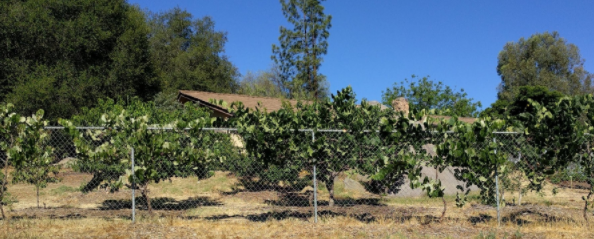 This is likewise an extraordinary method to get an affirmation in your homestead. Through this, you can forestall the chance of creature assaults. Essentially, cultivating should be possible either in little zones or in large zones. In this manner, so as to keep a limit in the spot, it is ideal to place a fence in your grapevines.
This is likewise an extraordinary method to get an affirmation in your homestead. Through this, you can forestall the chance of creature assaults. Essentially, cultivating should be possible either in little zones or in large zones. In this manner, so as to keep a limit in the spot, it is ideal to place a fence in your grapevines. Fundamentally, there are a few reasons why installing a fencing system in your grapevine is significant. This will concentrate on the security and assurance to appreciate an abundance gather later on. Recruit somebody who has the right stuff and information on the best possible establishment to guarantee quality.
During the arranging procedure about the grapevines, assemble more data that can assist you with getting an effective method to run a homestead. This likewise encourages you in your planning to get a fruitful grape vineyard. Consider making a sheltered method to develop your grapes through installing your wall yo become fruitful on cultivating.
Fencing and purchasing materials for this undertaking expect you to explore. There are a few proprietors who erroneously settle on specific choices and purchase materials without knowing the utilizations and significance of such things. On the off chance that you neglect to investigate, there is additionally a propensity that you will wind up purchasing an inappropriate items.
A few people accept that installing a fence over their grapevines are just for enrichment purposes. However, beside that, it encourages you guard your ranch from animals. While buying fencing, look at the materials utilized in it. In the event that they are produced using vinyl, wood, or steel, at that point the better. The shape and style likewise matter
There are likewise proprietors who erroneously pick bad quality fencing produced using various materials rather than wood or steel This waste your cash as well as would prompt grapevine disappointment. Your choice may likewise cause an immense misfortune so make a point to get more data about various types of wall particularly their disadvantages and advantages before settling on a ultimate conclusion.
Developing grapes in a section of land of land is really significant. There are wines being created which can help the economy of the nation. In any case, at times, individuals may likewise grumble for various reasons. Prior to beginning the undertaking, make certain to explore about the upsides and downsides of the establishment to guarantee that everything is leveled out.
Winery Equipment Cleaning and Sanitizing
- Details
- Category: Useful tips
The Sanitation Cycle
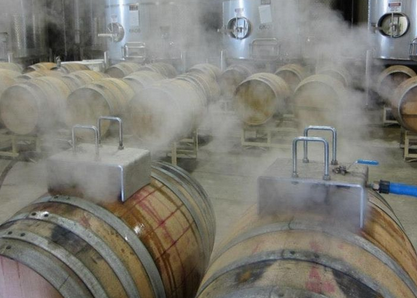 The winemaker has many cleaning and purifying systems to pick, yet there is constantly one steady right now the sanitation cycle.
The winemaker has many cleaning and purifying systems to pick, yet there is constantly one steady right now the sanitation cycle. - Clean everything before use.
- Sanitize everything before use.
- Use everything.
- Clean everything after use.
- Sanitize everything after use.
- Air dry and store everything.
What is the "Everything" in the Sanitation Cycle?
Recognizing what should be cleaned and disinfected is straightforward; for the most part, anything that interacts with the must or the wine during winemaking should be sterilized.
- Your Hands
- Fermenter holder and top
- Any blending hardware, spoons
- Measuring cups
- Hydrometer and test containers
- Bottling wands or frameworks
- Racking sticks
- Wine cheat
- Siphon bars and hoses
- Carboy
- Bung and sealed area
- Thermometer
- Wine bottles
What are the Approved Sanitation Methods for Winemaking?
There are numerous techniques to keep your gear clean, underneath the most widely recognized strategies are laid out.
Bubbling
The most fundamental approach to disinfect hardware is to heat up your gear in water. No synthetic substances are required, and all the winemaker needs is a compartment sufficiently enormous to hold the hardware, water, and a warmth source. In case you're simply beginning in winemaking, this may appear to be a simple and less expensive alternative, yet we don't prescribe utilizing this system. Without a doubt, it's simple bubble water on your stove to make pasta, however when you have to include each cylinder, mixing pole, and jug to the bubbling pot, you will before long understand that your pot is excessively little and you have to buy a bigger holder. It's simpler to buy synthetic concoctions that have been made precisely for the procedure.
- Advantages: no synthetic substances are required, effectively open, water is reasonable
- Disadvantages: tedious, huge compartment for bubbling, consume danger
Chlorine
Chlorine, as family unit dye, is effectively open and is a decent cleaner and disinfectant. It goes about as a decent glass gear sanitizer, however ought not be utilized on plastic hardware. Since chlorine can be consumed by the plastic, undesired flavors will be created in your wine. Also, in the event that you are utilizing it on glass gear, at that point you have to flush on numerous occasions and utilize extensive measures of boiling water after sanitation. Winemakers will in general use chlorine blanch in crises just, when they can't get to other progressively wanted sanitizing synthetics.
- Advantages: promptly accessible in type of family unit blanch, economical
- Disadvantages: can use on plastic, ruins garments, erodes hardened steel
Iodophor
Iodophor is utilized by the nourishment administration industry and restorative industry to sterilize hardware. It is an iodine cleanser, antiseptic and sanitizer. On the degree of utilization common sense, it is a no-wash sanitizer and generally speaking exceptionally simple to utilize. For instance, when utilizing an Io-Star Iodophor Sanitizer, you should utilize a ¼ ounce for each 2 ½ gallons of water for a 12.5 ppm arrangement. At this degree of fixation, you can add your gear to the arrangement and it takes roughly 10 minutes to disinfect. At that point permit the hardware to trickle dry for an additional 10 minutes before utilizing.
- Advantages: affordable, no-flush sanitizer
- Disadvantages: lethal in high fixations, stains fabrics, skin
Phosphate Based Sanitizers
At the point when somebody calls into Quality Wine and requests exhortation on a disinfecting arrangement, the main technique we allude is a corrosive based item - Star San Acid Sanitizer for Surface Sanitation. This arrangement is a no-wash sanitizer that extremely easy to utilize and keep up. It is produced using a nourishment grade phosphoric corrosive, which is alright for individuals and nature. Furthermore, in light of the fact that it is unscented and flavorless, not at all like chlorine fade technique, your wine won't be influenced with off-flavors. While sanitizing your hardware, it just should be in the answer for two minutes. In addition, the arrangement is reusable; it can will stay compelling for up to three to about a month in a fixed compartment.
- Advantages: no-wash sanitizer, brisk disinfecting time
- Disadvantages: dangerous in high fixations, wore defensive attire
Potassium Metabisulfite Powder
This strategy is told in the Winexpert Kits. Potassium metabisulfite purifies the gear by repressing microscopic organisms and wild yeast. At the point when joined with water, it discharges sulfur dioxide, which is an incredible germ-free. Subsequent to adding the powder to water, you will see a solid sulfur smell and individuals oversensitive to sulfites might be influenced by its intensity. This technique is viewed as a financially savvy disinfecting flush, in light of the fact that no extra washing with clean water is required.
- Advantages: Long timeframe of realistic usability, efficient, no flushing required
- Disadvantages: Needed precise estimating aptitude, a few people are hypersensitive to sulfites
Whatever cleaning operator you choose to use during your winemaking procedure, it's imperative to never get sluggish during the sanitation cycle.
How to Secure a Winery
- Details
- Category: Useful tips
Secure Your Wine Collection with a Simple Lock and Key
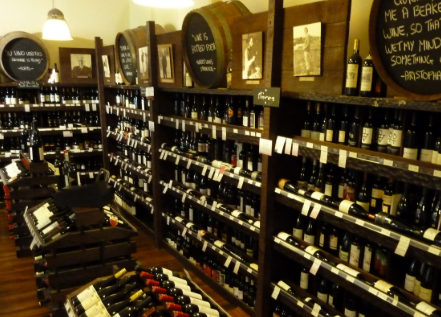 With present day basements, a basic lock and key framework should do the trick in keeping your wines secure. The establishment procedure is commonly snappy and simple – and permits you the genuine feelings of serenity that your wines are left immaculate.
With present day basements, a basic lock and key framework should do the trick in keeping your wines secure. The establishment procedure is commonly snappy and simple – and permits you the genuine feelings of serenity that your wines are left immaculate. Utilizing a Combination Keypad as a Wine Cellar Security Measure
For a progressively upscale alternative that doesn't require a key, a security keypad can be introduced at the passage of the basement. Your four-or-five digit code will be the best way to open the entryway to the basement – which is an incredible wellbeing highlight most gatherers appear to lean toward.
Ensuring Your Wine Collection with Individual Bottle Locks
Another choice, which is quickly picking up prominence, is singular container locks. This choice is frequently introduced with a lock-and-key alternative, to verify probably the most significant wines in the basement. This alternative basically forestalls the capacity to open the jug of wine since the lock fits around the spout of the container. This jug lock can be introduced with a key-opening alternative or with a blend lock.
Additional Wine Cellar and Collection Security
Aside from essentially bolting your basement or wines, there are methods for enabling you to watch out for the comings-and-goings around your basement.
Surveillance Cameras
Regardless of whether it is inside or around your basement, cameras will enable you to see precisely what's going on around your valuable collection. Numerous advanced cameras are associated with your telephone, so you can sign in and screen or determine the status of the basement whenever, from any area.
Sensors
The best security incorporates a safeguard alternative. In this way, with worked in sensors, you are advised about any development before they can get to your basement. Sensors can follow development or warmth – and furthermore send a notice to your cell phone in a moment. Joined with your surveillance camera, this security include is top-of-the-extend!
Fire Protection for Your Wine Cellar and Wine Collection
Every one of the keypads, cameras and sensors are incredible for wellbeing against people getting into your prized wine collection. Be that as it may, there are a few mishaps that can happen that are past your and your security highlights control. In case of a fire in your home, there are sprinklers accessible for establishment inside your basement to guarantee your collection is ensured. Some wine collections, worth a large number of dollars, can be demolished in a moment – so putting resources into a sprinkler-framework probably won't appear the most noticeably terrible thought.
Whatever your security needs – and whatever the size of your collection – a security framework is certainly something worth considering. You've committed all your opportunity to put resources into great wine, so think about setting aside the effort to put resources into legitimate assurance.
Building a Wine Cellar
- Details
- Category: Useful tips
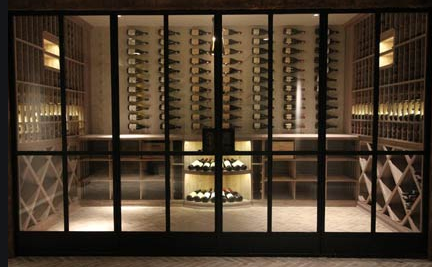 Huge numbers of the under stairs wine stockpiling units in plain view today likely serve better as a dazzling wine show that would likewise house a portion of your more affordable wine. A blend of the ideal wine cooler for the expensive, very good quality wine combined with some open cupboards under the staircase that make a dazzling showcase offers the best of the two universes.
Huge numbers of the under stairs wine stockpiling units in plain view today likely serve better as a dazzling wine show that would likewise house a portion of your more affordable wine. A blend of the ideal wine cooler for the expensive, very good quality wine combined with some open cupboards under the staircase that make a dazzling showcase offers the best of the two universes. Kindly don't discount the under stairs wine basement very rapidly, as a portion of the contemporary enjoyments offer first class assurance from warmth and light while ensuring that the custom-make glass dividers make a rich, curated visual. While some penance immaculate stockpiling conditions for feel, others attempt to locate the tricky harmony between both structure and capacity!
All in all, is it conceivable to construct that perfect, temperature-controlled wine basement under the staircase to hide your loved wine assortment? Totally, as the staggering wine basement and all-glass unit under the staircase features your assortment. Investigate past the advanced plans for an extraordinary wine basement that not just includes surface, style and interest to your home, yet in addition benefits as much as possible from the unbalanced alcoves under the staircase. A natural, old-world-roused basement or an idiosyncratic mechanical wine stockpiling unit may utilize the space than a progressively inflexible, contemporary other option.
Cleaning and Sanitizing for the Winemaker
- Details
- Category: Useful tips
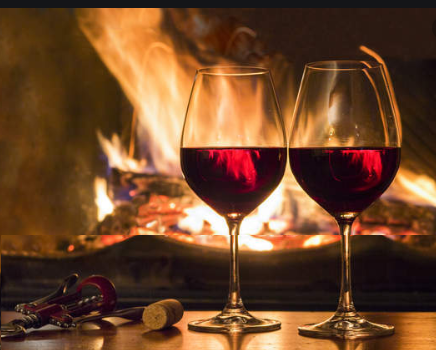 Wash off obvious soil and buildups from your winemaking gear. Scour bottles, cans, spoons, estimating cups, tubing and every single other material with a delicate jug brush. Expel any scale or grime that could be covering up in niches or corners and guarantee all things look physically perfect before you endeavor to purify them.
Wash off obvious soil and buildups from your winemaking gear. Scour bottles, cans, spoons, estimating cups, tubing and every single other material with a delicate jug brush. Expel any scale or grime that could be covering up in niches or corners and guarantee all things look physically perfect before you endeavor to purify them. Fill a huge pot or pot with water. Set the pot with water on the stove top and enable it to bubble for 15 minutes at 170 degrees Fahrenheit.
Spot littler winemaking materials into the bubbling water for five to 10 minutes. Bubbling is a decent, modest strategy for disinfecting things, and anything that fits into your pot can be purified thusly. Plugs, tubing, siphons, estimating cups, spoons, pipes and significantly littler jugs may fit inside the pot. Use tongs to evacuate things while they are as yet hot.
Empty one gallon of water into a huge clean container. Include 3 grams of potassium metabisulfite gems and 12 grams of citrus extract to the water. Break up the precious stones completely to make a generally useful disinfecting answer for use for the remainder of your winemaking gear.
Spot bigger winemaking things in a protected area, for example, a perfect kitchen sink. Pour the cleaning arrangement inside and over the things. Enable the things to sit shrouded in the answer for five to 10 minutes in the wake of pouring. This cleaning arrangement can be utilized for any of your winemaking hardware and will purify enormous things, for example, carboys, jugs and pails.
Spill out and flush off the disinfecting arrangement from every one of the materials with clean water. Utilize the winemaking gear promptly to keep away from pollution from any microorganisms.
Wine Stains on the Wall: How to Remove Them?
- Details
- Category: Useful tips
It dismisses quite a remarkable figure when you're elegantly holding a Wineglass in your own hand. However, walls stained with a splash of wine are not appealing in any way.
You can hardly blame your visitors for spilling wine on your favorite wall once they've had a glass or two of Chardonnay. Since wall paints are quite porous, they readily absorb any vivid liquids like red wine, which makes the stains deeply ingrained in the walls.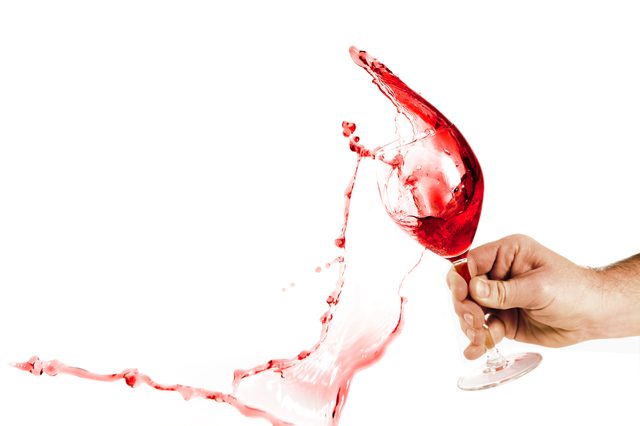

The stubborn stain of red wine comes from a pigment found in the skins of the grapes. This pigment was placed from the family of anthocyanins, which can be food-coloring substances. They're very similar to cloth dyes and efficiently attach themselves into fibrous and porous surfaces.
Even though there are numerous commercial cleaners in The market, one always doesn't possess a technical wine stain remover at hand punctually for a wine party. And when it comes to wine spots, the faster you act the better results you get.
Some household cleaners Which are easily available in most homes can come to your aid when comes to wine stain removal. Since there are many household cleaners that are recommended to remove wine stains from wall, we tested bleach, hydrogen peroxide, Windex, Magic Eraser, a paste of baking soda and salt in addition to plain old dish soap for their value against the stubborn stains.
Bleach gave outstanding results with wine stains on the walls, followed by hydrogen peroxide as red wine stains, like coffee and tea, come under the class of oxidisable stains.
Magic Eraser also generated good results, But should be used on pricey wall paint with caution. Dish soap will work well if the stains are not that stubborn. When the stains are light and fresh, Windex will even work.
Baking soda and salt paste gave the worst consequences by far.
Now You can make your choice depending on these test results when using household cleaners to remove red wine stains from the wall.
Here are several approaches by cleaning services Scottsdale to utilize whenever a guest or some beloved one cleans red wine on your wall.
Using Bleach
Bleach is among the Best cleaners that can tackle almost Any type of stain. Bleach essentially changes the chemical nature of the pigments that form the stains. This changes their physical appearance also and as a result, the stains no more stay observable.
Benzoyl peroxide (H2O2) is a natural bleaching agent. When used on stains, it divides into a water molecule and a lone oxygen atom which oxidizes the pigment in the stain changing its chemical character and in turn, bodily appearance. If the wine stain is fresh, you should have success in removing the stain from the wall using this one ingredient.
Stains on walls. While it may seem like a sponge that is soft, its structure makes it hard as a glass. When rubbed against stained coating, it works like superfine sandpaper, only without harming the paint job on the wall.
Like Any normal eraser, the foam gets used up as you proceed. If the wine stain Covers a small area of the wall, cut a little piece of the Magic Eraser To match your size. This will stop wastage and also allow you to cover Just the stained area, saving the surrounding area.
The Cost to Start a Wine Business
- Details
- Category: Useful tips
Take this advice with you during your planning from SBA loans service Cleveland OH.
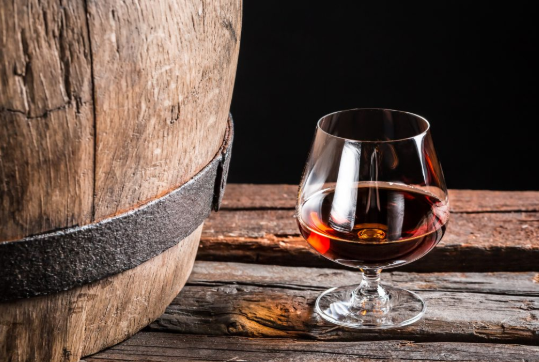 A winery proprietor will contribute substantially more than they gain from the start
A winery proprietor will contribute substantially more than they gain from the start Expect high numbers for what amount does it cost to begin a winery. That remains constant whether you buy a built up one or fabricate one starting from the earliest stage. What used to $100,000 per section of land is currently around $300,000. Later on, you can even now anticipate yearly support of near $20,000 per section of land. Include hardware and the expense to construct a creation building and tasting room.
Tolerance is putting it mildly
The winery business isn't for any individual who needs a brisk turnaround. It will feel much like working for nothing for over 10 years. It's been demonstrated to take somewhere in the range of 11 and 13 years to get into the positive from your wine generation. During that time your stages incorporate arranging, prepping and building up your vineyard, delivering grapes, and executing your promoting technique.
Investigate other rewarding segments outside of beginning a winery
Owning a winery is just a single choice in the business. You can in any case bring home the bacon, and do it all the more rapidly, by investigating different chances. Numerous individuals even make their very own items for continuous wine consumers. There are a couple of more alternatives that are near the winery business without the huge speculation.
Virtual Winemaker
On the off chance that you don't have to micromanage your business, you can consider owning the wine brand. With this idea, you'll join forces with different vineyards. With your information, they get the grapes and produce the wine. A few organizations even make the mark and jug. Your responsibility is to make and advance the brand.
Staggered Marketing Wine Business
Another best approach is piggybacking off another person's brilliant thought. As of late, a couple twenty to thirty year olds blended another item with an old plan of action. Organizations like Winestyr joined numerous different brands utilizing system advertising. Cosmetics, adornments, shoes, and now wine has a direct to client approach. Most organizations require their wholesalers to purchase a specific measure of wine forthright. From that point, they can exchange it to their customers.
This opens the entryway for some promoting techniques. Some utilization the antiquated local gatherings. Others center more around their sites and online networking. Regardless of what approach you pick, this is an alternative to begin your wine business. You can be a merchant or begin your image for others to convey. The best part is it's without the stress of what amount does it cost to begin a winery.
Owning a Winery Isn't a One-Person Job
Beginning and running a winery isn't one of the new age solo business person ventures. In the case of anything requires collaboration, it's accomplishment in winery business. There are a great deal of moving parts associated with beginning and running a winery. Both the land and the item have guidelines. You'll need assistance with permitting and allows.
Concerning the everyday routine, consider cooperating with another person who has a similar business objective. It might be justified, despite all the trouble to part the work and the inevitable income. Ensure their drive and hard working attitude coordinates yours. You'll each have some long days in front of you. Regardless of whether you don't legitimately accomplice, get a few specialists in your group. You need assistance with learning the business and getting financing.
Alcoholism
- Details
- Category: Useful tips
 having inherited by the Spanish, industrialization in which in urban regions are exposed to everyday stress, or even the press portrayal of alcohol ingestion as cool or fun. With all these variables and more, it isn't surprising that ingestion is simply about the upswing, and needless to say, alcohol-related ailments, deaths, and injuries also.
having inherited by the Spanish, industrialization in which in urban regions are exposed to everyday stress, or even the press portrayal of alcohol ingestion as cool or fun. With all these variables and more, it isn't surprising that ingestion is simply about the upswing, and needless to say, alcohol-related ailments, deaths, and injuries also.For all those 65 years old and over, just 1 beverage is advocated, in any respect. Beyond this amount, your health and the protection of others might be compromised. Alcohol is well known to have adverse health consequences, from neuropsychiatric disorders, gastrointestinal ailments, cancers, and cardiovascular ailments. Worldwide, European countries have the maximum wine per capita intake, the Americas eat the most beer per capita, and the Southeast Asian Area beverages the many spirits. WHO, but also claims that the lower the socioeconomic standing of a individual in a nation, the greater the prevalence of celiac disease burden from alcohol. This might be accurate, since in Southeast Asia are next heaviest drinkers alongside Indonesia. That is alarming, since not only is it alcohol a significant health issue, it's a social issue too. Owing to the intoxicating properties, excessive levels may result in violence, injuries, trauma, suicidal tendencies, or disease. What's more, it exposes the youth to spontaneous behavior that could cause them to try drugs, engage in unprotected intercourse, or exhibit violent behaviour.
Given such figures, the government now has plans and a law for alcohol-related causes. The Department of Health has launched a plan to promote a healthful lifestyle which intends to curb or reduce non-communicable ailments. There's also been a law which provides law enforcers the right to punish drivers that are demonstrated to be driving under the influence of drugs or alcohol. There also have been excise taxes levied on alcoholic drinks to control the business and discourage ingestion.
Although it's good that the government has measures to curb alcohol intake, it isn't sufficient. There should even be regulations levied on alcohol producers, bars, as well as the press, to control the creation, distribution, and marketing of those goods. Education, particularly among the youth, regarding the consequences of alcohol must be educated in colleges, as adolescents are likely to test them in this moment. Moreover, families need to also take initiative in your home. Living a wholesome lifestyle is almost always a fantastic case for the youth which they might imitate as they grow old. If you know a person who's alcoholic (somebody who is based on alcohol or can't quit drinking alcohol), please assist him/her visit a rehab center for assistance. If you're now an alcohol drinker, then control your intake before it is too late.
How to Clean Wine Stains during your Party?
- Details
- Category: Useful tips
Spilled wine should not elongate the Soul of any celebration! Eliminate a red wine stain fast and easily using these suggestions from cleaning services Marlborough, MA so that you can go back to your party.
Acrylic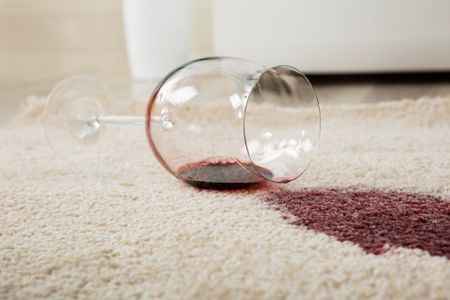

Before you start, browse the garment's label carefully and Follow any directions. Also follow the company's instructions on some other cleaning products mentioned. To get rid of a wine stain from acrylic, rinse the affected area in cold water as soon as possible; this is going to dilute the blot and prevent the wine from setting. Adhering to the guidelines on the clothing care label, washing at the warmest water recommended. Inspect the stain; when any wine remains, wash in color-safe bleach (colors) or liquid chlorine bleach (whites), in case the garment label says it is OK. Air-dry, inspect, and repeat as necessary prior to drying as directed on the garment label.
Brick
Rinse The brick surface. If the stain remains, blot with hydrogen peroxide or bleach diluted with water (blend according to the jar's instructions ). Let sit for five minutes. Rinse with clean water.
Canvas
To treat wine canvas upholstery, blot the stain with warm, sudsy water, Then blot with a dry cloth. Dab into a 50-50 mix of vinegar and water, and blot again. Dab in warm, sudsy water ; blot. Dab with clean waterblot dry. Repeat as necessary.
To treat a wine stain on washable canvas, then soak the garment for 15 minutes in A mixture of 1 quart lukewarm water, 1/2 teaspoon mild clear dish soap, and one tbsp white vinegar. Rinse with water. If stain remains, place the garment facedown atop a work surface cushioned with sterile white stripes or paper towels. Lightly sponge stain with rubbing alcohol (test on an inconspicuous place first), blotting from external edges toward center. If stain remains, soak garment for half an hour in enzyme solution (1 quart warm water mixed with 1 tablespoon of an enzyme presoak product). Make sure that the stain is gone before drying directed on the garment's label.
Carpet
To remove wine from natural-fiber carpet, dab the stain with warm, sudsy Stir using a solution that's 1 part clear ammonia to 2 parts water, then blot dry. (Follow use instructions on the ammonia bottle.) Dab with a 50-50 vinegar-water option, then blot dry. Blot dry. Repeat all if needed.
To remove wine from artificial carpeting, dab the stain with warm, sudsy water. Dab in a way that is 1 part vinegar to 2 parts water. Wait 15 minutes more, then blot with a damp cloth. Blot dry. Repeat steps until stain lifts.
Ceramic Tile
To remove wine from Ceramic tilewipe the tile immediately using tepid to warm water. If wine stain Persists, spray with a mixture of 1 part hydrogen peroxide to 2 parts water. Let Sit 30 minutes. Rinse with a hot, moist cloth. Repeat if necessary.
Coronavirus: Impact on U.S. Wineries
- Details
- Category: How Technology Is Transforming the Wine Industry
Luckily, liquor store in Davie, FL explains that the wine exchange has had one bit of leeway over numerous different businesses in that, for the most part, the legislatures of wine creating countries have declared that wine creation ought to be secured as a basic industry.
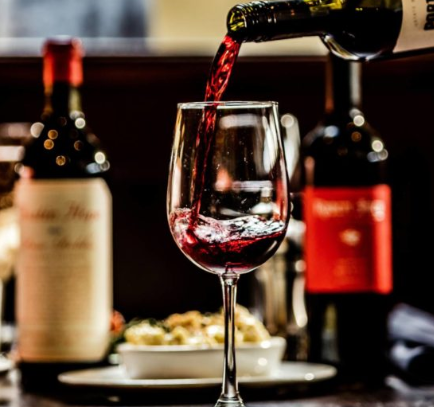 This implies it might keep working during the times of lockdown and different limitations. However, that has still left makers with a heap of different issues to manage.
This implies it might keep working during the times of lockdown and different limitations. However, that has still left makers with a heap of different issues to manage. In spite of us drinking a greater amount of it at home, there has been an impressive downturn in incomes, and business for the most part, which is unavoidably going to have longer term ramifications for makers and every single other piece of the business.
Definitely, the conclusion of cafés and bars in a nation where they are a piece of the social texture has prompted an enormous drop in incomes, which is just somewhat counterbalanced by the related increment in store deals.
The various exchange tastings that generally occur during as the year progressed, which are the greatest exhibits for some makers and a fundamental piece of the activity of wine essayists, are presently waiting or dropped – social removing aside, casting off mouths loaded with wine into spittoons is fairly disapproved of the present moment.
Concerning viticulture, there have been reports from certain domains of just a single specialist being permitted per line of plants, some of the time two lines, unavoidably expanding the term of weeding, tying up sticks, cutting and other such late-spring work.
Work breaks are lurched to diminish the size of social events. Enrollment is required with the applicable service which has been doing confirmation on location of safe practice. This has come at a major budgetary cost, which makers will try to counterbalance by expanding future fares.
While they have had the option to proceed with confined work in the grape plantations (remembering putting out ice candles for cool nights to secure youthful buds), Ridgeview lost a lot of income short-term with the conclusion of eateries, lodgings, grape plantation visits and their basement entryway, and may lose 33% of anticipated salary for 2020. Luckily off-exchange deals are unaffected and online deals have improved.
With income consistently a test in the wine exchange (wines are frequently not prepared available to be purchased for at least three years), they have expected to acquire stock money to empower them to bottle the 2019 vintage and keep away from business break in future.
I have quite recently tasted the Ridgeview Bloomsbury NV, which has the signs of achieved winemaking, and that foreshadows well for an arrival to great occasions when the pandemic is finished.
One positive thing evident from different reports I have perused on the impact of coronavirus on the wine business, is the amiableness and aloofness of the individuals who produce wine. They are, truth be told, vital attributes in the individuals who produce wine.




